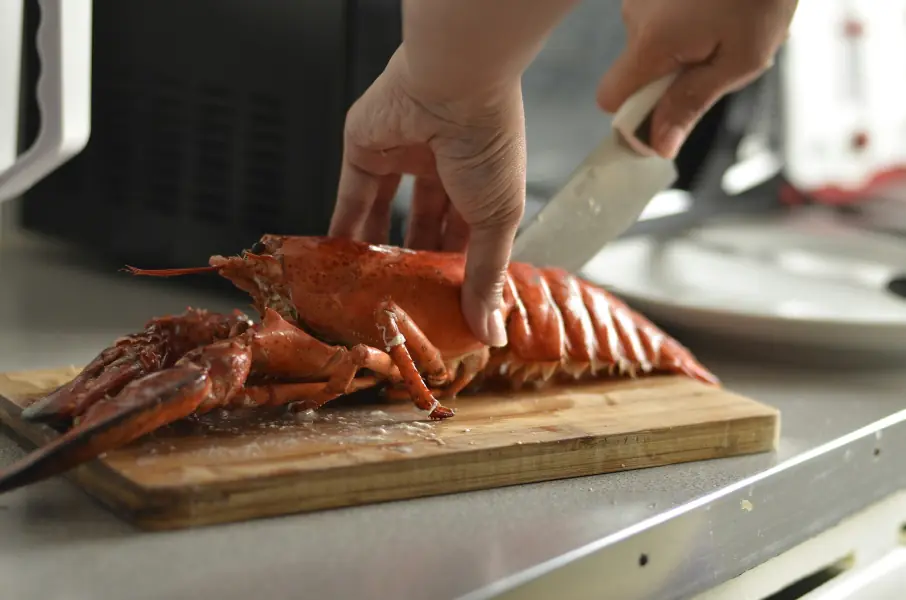Do Seafood Feel Pain? And How to Humanely Dispatch Them at Home
For years, the question of whether seafood experiences pain has been a source of debate. However, a growing body of scientific evidence now strongly suggests that crustaceans (like crabs, lobsters, and shrimp) and potentially even shellfish (like clams, mussels, and oysters) are capable of feeling pain and suffering. This understanding has significant implications for how we treat these animals, especially when preparing them for consumption at home.

Part 1: The Science of Seafood Pain
While seafood doesn't have the same complex brain structures as mammals, they possess nociceptors - nerve cells that detect harmful stimuli. These nociceptors trigger a cascade of physiological and behavioral responses that indicate the experience of pain.
Here's what scientific research tells us:
- Crustaceans: Studies have demonstrated that crustaceans exhibit clear reactions to noxious stimuli such as heat, acid, or physical harm. These reactions include:
- Avoidance behavior: They actively try to escape the source of the stimulus.
- Physiological changes: Increased respiration rate, release of stress hormones, and changes in heart rate are observed.
- Learned avoidance: Research shows that crustaceans can learn to avoid places where they previously experienced a painful stimulus, suggesting they remember and learn from these experiences.
- Neural Processing: Recent studies using EEG-style measurements have shown activity in the brains of crustaceans when exposed to painful stimuli, indicating that they process these sensations as pain. A 2024 study published in Biology using shore crabs is a prime example.
- Shellfish: The question of pain in shellfish is more complex. Their nervous systems are simpler, but some studies suggest limited pain perception. They react to negative stimuli, but the complexity of the response is lower than in crustaceans. More research is needed in this area.
This evidence has led to significant changes in animal welfare laws in some countries. For example, the UK government has recognized decapod crustaceans as sentient beings.
Part 2: Humane Slaughter Practices for Home Cooks
Given the evidence of pain perception in seafood, it's our responsibility to dispatch them as humanely as possible. Here's a guide for home cooks:
- For all Crustaceans (rapid chilling): Place the crustacean in a container of ice slurry (a mixture of ice and water) for at least 20-30 minutes, or until they become unresponsive. This slows their metabolism and reduces their sensitivity to pain. While not as ideal as electrical stunning, it is the most practical method for home cooks.
- For Shrimps: The most common approach is after rapid chilling, to immediately cook them by dropping them into boiling water. The rapid temperature change during cooking is thought to lead to a quick death.
- For Crabs (spiking): Turn the crab on its back. You will see two small indentations on the underside of the crab, one near the edge of the tail flap and the other near the mouth. These are the two main nerve centers. Use a sharp, pointed object such as a thick needle, an awl, or a pointed knife to spike through both of these nerve centers. Start with the one in the abdomen, then the one in the head. After spiking both nerve centers, check for any signs of movement. If the crab is still moving, repeat the spiking process. Only begin the cooking process after the crustacean is confirmed to be dead.
- For Lobsters (splitting): Use a large, sharp knife to quickly cut the lobster lengthwise through the center of the head and body. This severs the nervous system, leading to a faster death.
- For Mollusks: The most humane approach is often to cook them live. Keep Them Cool and Moist by storing shellfish in the refrigerator, covered with a damp cloth or in their original packaging, until just before cooking. The rapid temperature change during cooking is generally considered to lead to a quick death. However, ensuring they are very fresh and alive is crucial for this to be considered humane. If you are concerned, you can quickly shuck them and then proceed with cooking. This will ensure they are dead before being exposed to heat.
- For Squids & Octopuses: While there isn't a single universally agreed-upon "most humane" method, some chefs recommend a quick blow to the head or severing the head from the body. Freezing them for a short time (until they are no longer moving) before preparation is also an option.
- For Fish: Stunning can be achieved through percussive methods, using a blunt instrument like a fish bat to deliver a sharp blow to the head, ensuring immediate unconsciousness. Rapid chilling, immersing smaller fish in an ice water slurry, is another option. Following stunning, the fish should be killed quickly. Pithing, inserting a sharp object into the brain, is a highly effective method. Alternatively, gill cutting, severing the gills to induce rapid blood loss, can be performed immediately after stunning. The key is to minimize the time between stunning and killing to prevent the fish from regaining consciousness.
Part 3: Unacceptable killing methods
The following methods of stunning or killing crustaceans must not be used because they cause an unacceptable degree of pain and suffering to the animal:
- Boiling (without prior stunning)
- Dismemberment
- Gassing (e.g., using carbon dioxide)
- Immersion in fresh water (osmotic shock)
- Immersion in water of high salinity.
Similarly, live crustaceans must not be:
- microwaved
- removed from the water and left to die from lack of oxygen
- placed in a container of water without adequate aeration and left to die from lack of oxygen
- exposed to caustic chemicals
- served in any dish involving a live crustacean for consumption.
By understanding the scientific evidence and adopting more humane handling and slaughter methods, we can significantly reduce the suffering of seafood and ensure a more ethical approach to food preparation.
